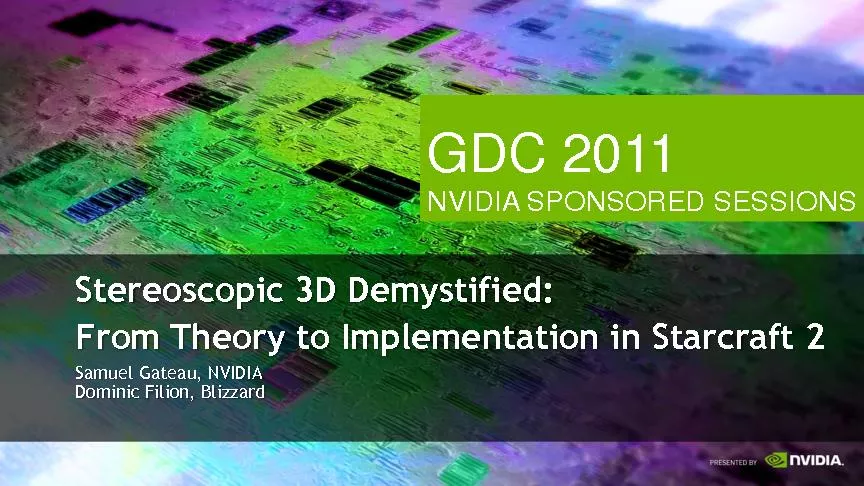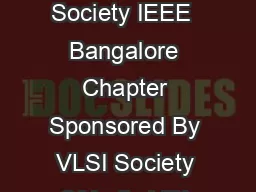PDF-SPONSORED SESSIONS
Author : myesha-ticknor | Published Date : 2016-08-07
GDC 2011 NVIDIA GDC 2011 NVIDIA SPONSORED SESSIONS Samuel Gateau NVIDIA Dominic Filion Blizzard Stereoscopic 3D Demystified From Theory to Implementation in Starcraft 2 GDC
Presentation Embed Code
Download Presentation
Download Presentation The PPT/PDF document "SPONSORED SESSIONS" is the property of its rightful owner. Permission is granted to download and print the materials on this website for personal, non-commercial use only, and to display it on your personal computer provided you do not modify the materials and that you retain all copyright notices contained in the materials. By downloading content from our website, you accept the terms of this agreement.
SPONSORED SESSIONS: Transcript
Download Rules Of Document
"SPONSORED SESSIONS"The content belongs to its owner. You may download and print it for personal use, without modification, and keep all copyright notices. By downloading, you agree to these terms.
Related Documents














